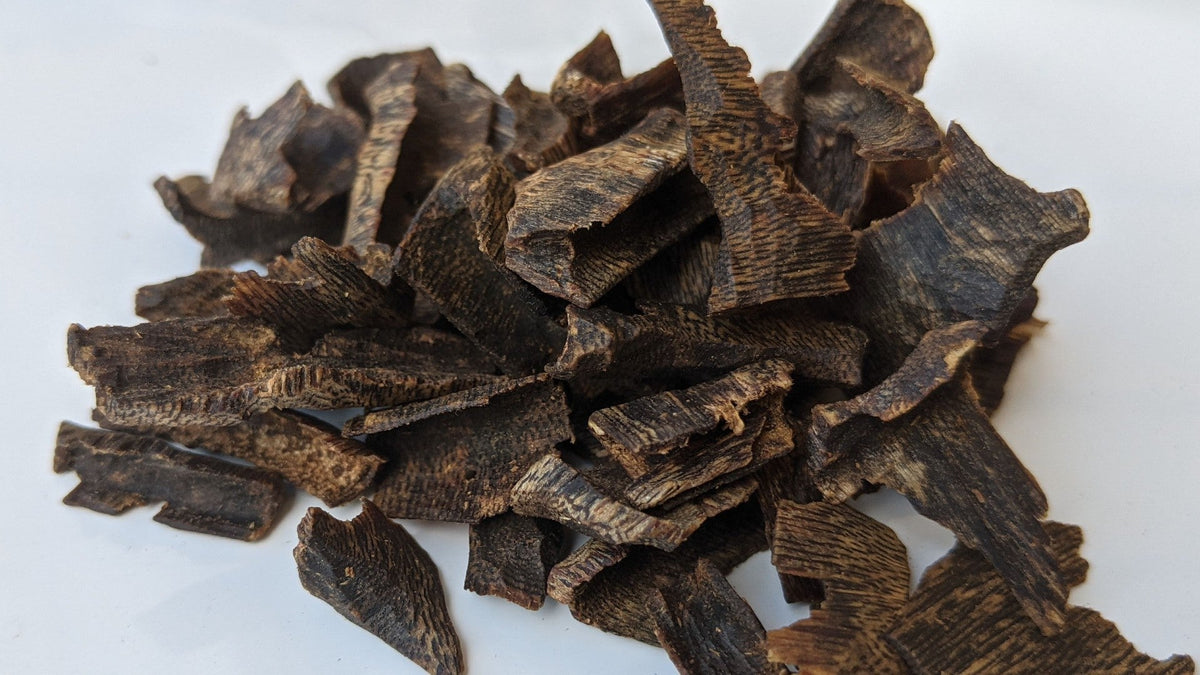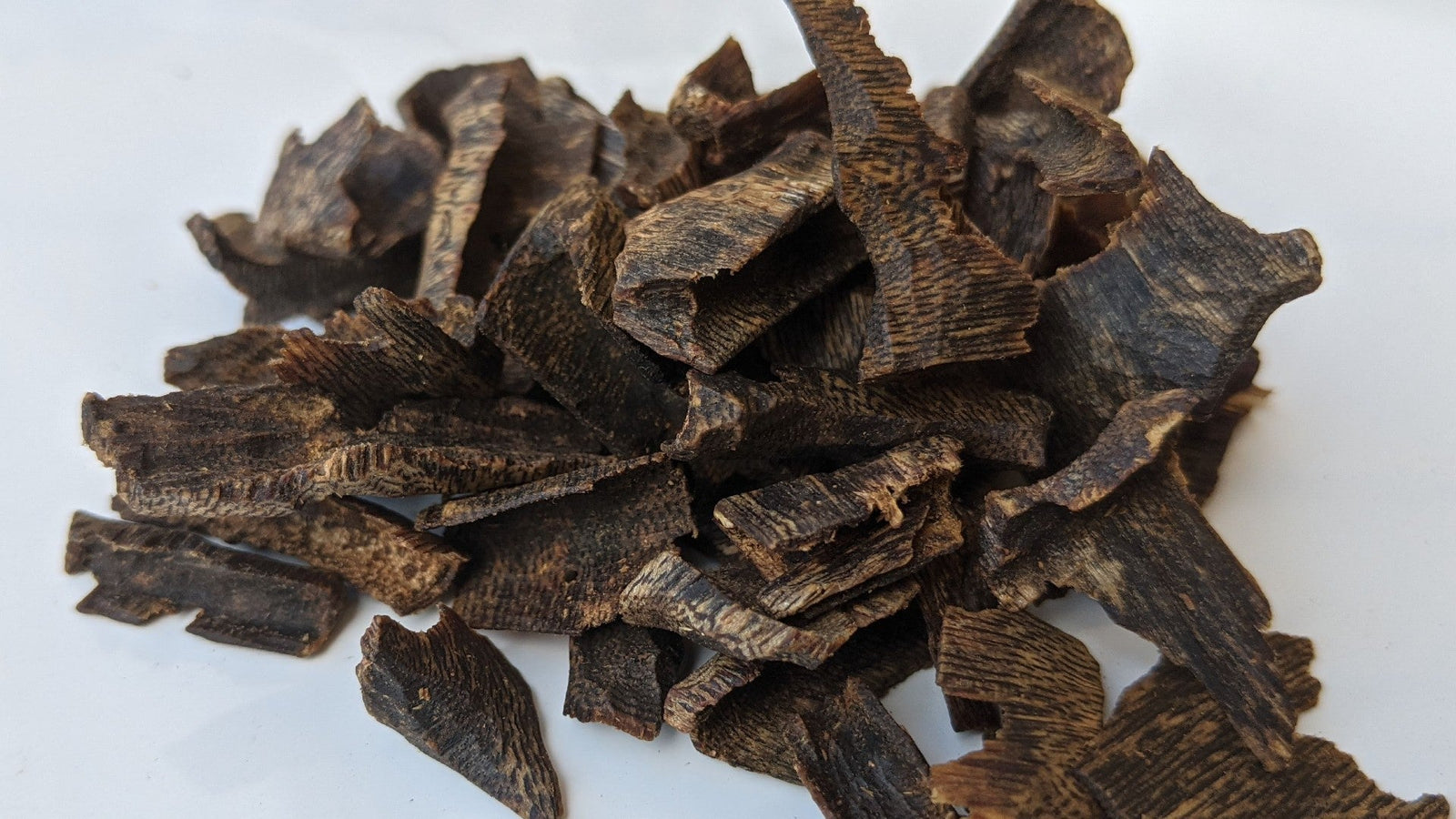
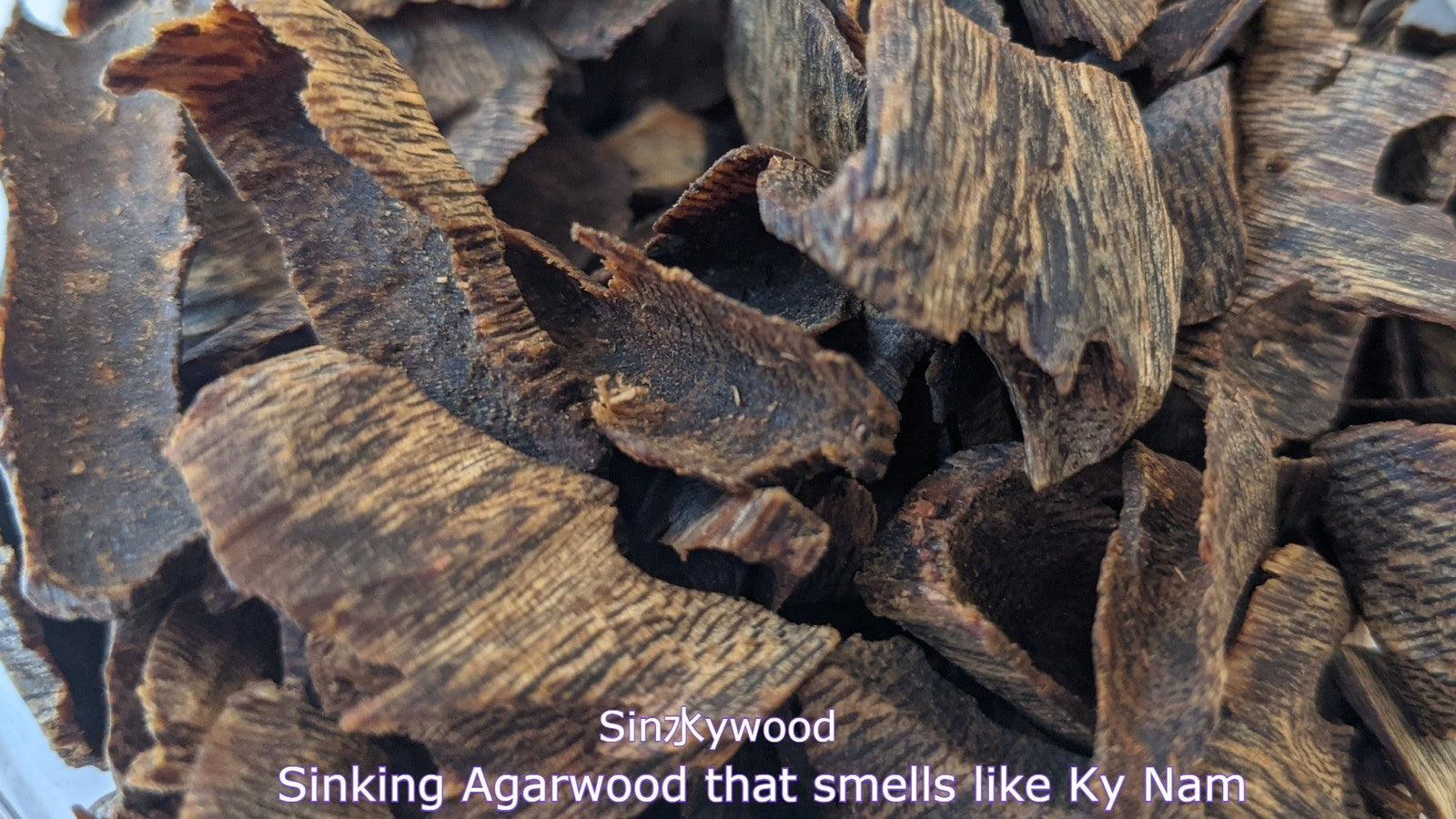
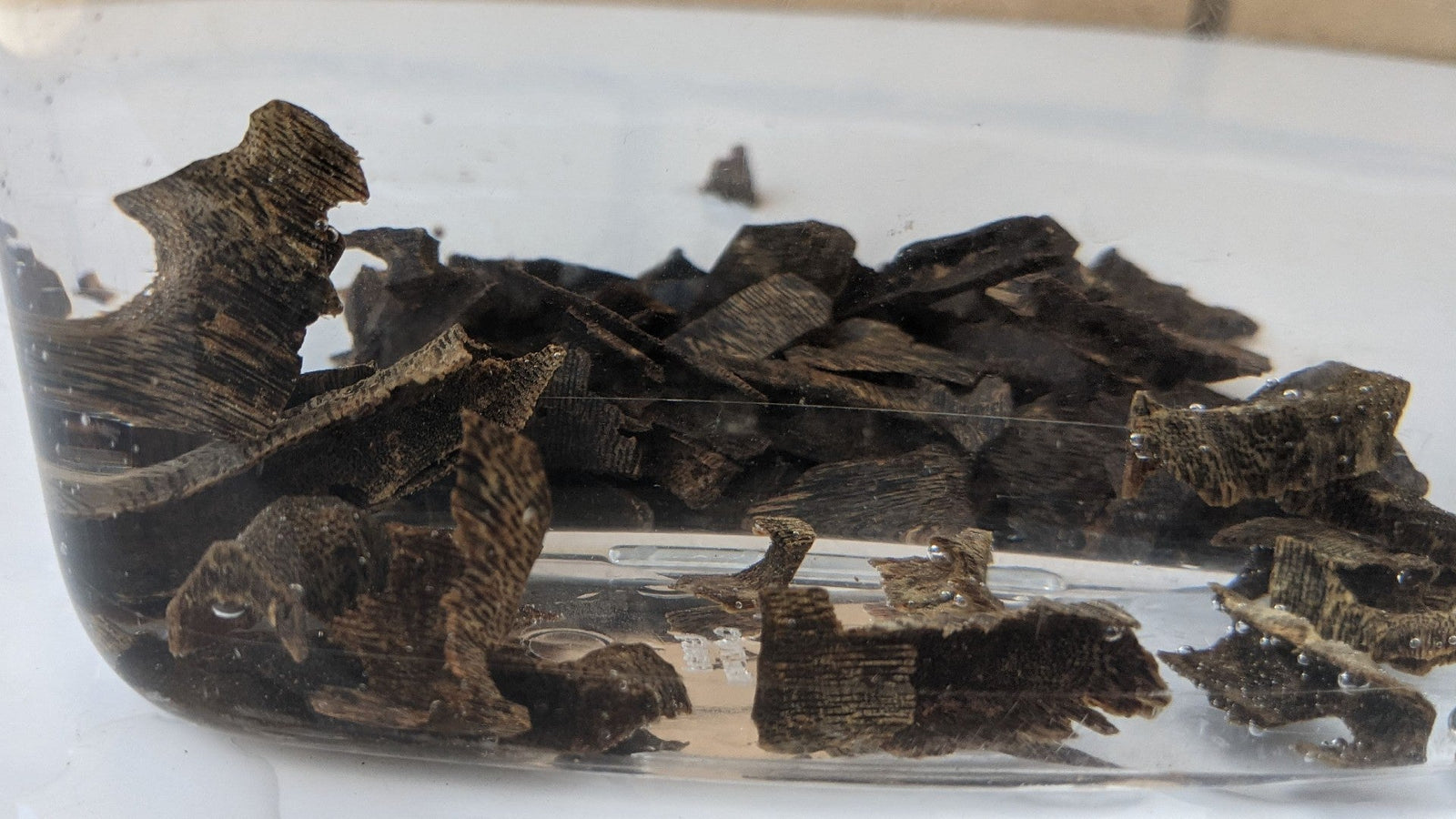
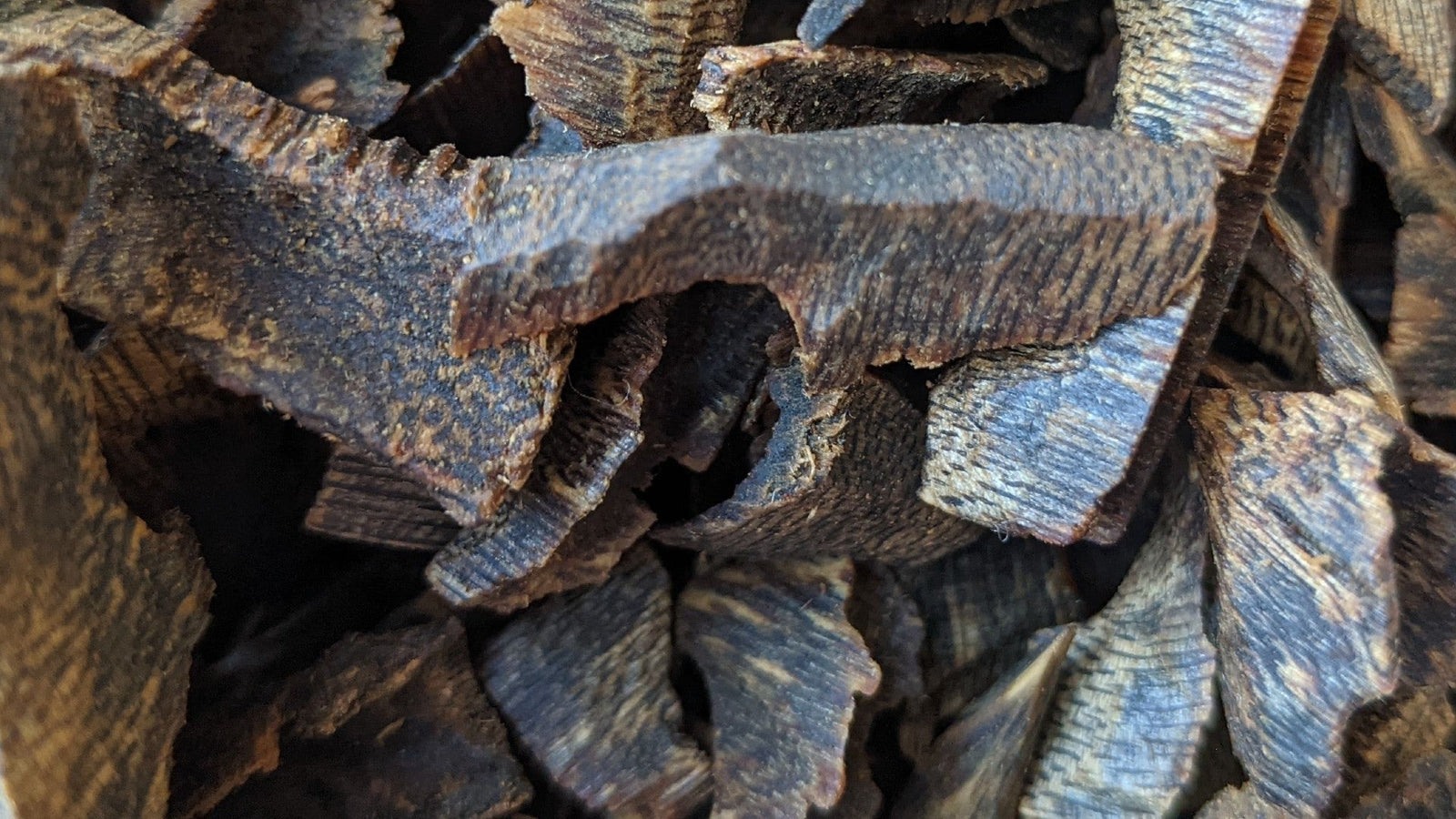

*New* Sin水ywood (Sinkkywood) - The sinking Agarwood that smells like Ky Nam (*)
LOOK, LOOK, IT SINKS!
Dear oud lover
As someone with a passion for enjoying the agarwood smell, you have probably tried different types of Agarwood. You have also developed your preferences for this divine aroma.
I am sure you have heard of two things: sinking Agarwood and Ky Nam. Perhaps, you have even tried them before. But just in case you have not, allow me to introduce them to you briefly.
Why do people desire Sinking Agarwood?
Most Agarwood floats because its density is less than water. I won't bore you with the details, but please click here to read what makes an object float or sink.
Put it simply
Water density is 1 g/cm3
The wood will float if the density is less than "1". This is the main reason that most of Agarwood on the market will float because their density is less than "1".
See the below Aquilaria trees' density - tree species that produce Agarwood.
-
Aquilaria agallocha:
- Wood Density: 0.3334 g/cm³
- Standard Deviation (Stdv): 0.0345
- Number of Samples (N): 5
-
Aquilaria macrophylla:
- Wood Density: 0.5483 g/cm³
- Standard Deviation (Stdv): 0.0639
- Number of Samples (N): 6
-
Aquilaria microcarpa:
- Wood Density: 0.3400 g/cm³
- Standard Deviation (Stdv): 0.0000
- Number of Samples (N): 2
-
Aquilaria sinensis:
- Wood Density: 0.3660 g/cm³
- Standard Deviation (Stdv): 0.0133
- Number of Samples (N): 4
-
Aquilaria sp.:
- Wood Density: 0.3400 g/cm³
- Standard Deviation (Stdv): 0.0000
- Number of Samples (N): 3
Each entry provides the mean wood density, the standard deviation of the measurements, and the number of samples used to calculate the mean. This data is crucial for understanding the physical properties of wood from different Aquilaria species, which can be significant for various applications, including the production of agarwood.
Source Tree Functional Attributes
So why do some Agarwood sink?
It sinks because its density is larger than "1".
But how?
Two factors make the Aquilaria tree sink
Age of the tree
Usually, the older the tree, the denser it becomes, but age alone is not enough to make it sink.
Age of infection
Every time the Aquilaria tree is attacked by fungus and boring insects, the tree forms Agarwood to defend and heal itself. Agarwood is tree resin, and it increases the density of the tree. The more agarwood forms, the denser the wood becomes. Until one day, when the density of the tree surpasses the magic number 1 (the density of water), the wood sinks.
When the Agarwood sinks, it usually means two things: it is old, and it has a lot of resin (enough to make it sink)
It is scarce to find sinking Agarwood in the wild jungle because trees take time to grow. Some hunters estimated only 1 in 100 Aquilaria trees contains Agarwood, but finding sinking Agarwood is more challenging. I do not have an exact number, but I would guess probably 1 tree in 1000 or more.
Why do people desire Ky Nam?
Ky Nam is Agarwood that contains little wood but resin. In Japan, it is known as Kyara, derived from the Sanskrit word kara - "black".
Ky Nam is the highest quality variety of Agarwood and possesses all five component flavours: Bitter, Salty, Sour, Spicy, Sweet. It is prized for its noble and elegant scent – like an aristocrat in its elegance and gracefulness.
Genuine Ky Nam is found from the wild only, and it is extremely rare because it takes a century to form. Genuine Sinking Ky Nam is almost non-existent.
Because of its scarcity, its price is high, up to millions USD per kg.
But here is good news.
A horticulturist has recently planted and harvested Agarwood that sinks in water; it looks and smells similar to Ky Nam.
Announcing Sin水ywood (Sink-ky-wood)
水 <- shuǐ (Chinese character) means water, and it looks like a double K: ꓘK (remove the central line and you will get 水)
SinꓘKywood is our extraordinary Agarwood with a lot of agarwood resin, so much resin that it sinks in water.
But sinking is just part of it because the trees that produce Sin水ywood can produce Ky Nam. But instead of getting the rare Ky Nam from the wild, we grow it from our plantation.
I mention that the aroma of Sin水ywood is similar to Ky Nam, but it is NOT identical to Ky Nam.
To me, genuine wild Ky Nam is sacred, and I think we should exclusively refer it to the genuine wild Ky Nam, something that takes centuries to form.
Thanks to horticulture, the science of cultivation, we developed something that seems impossible.
Sin水ywood sinks in water and has some wild Ky Nam's aromatic compounds.
I know what you are thinking:
Is this Sin水ywood real Ky Nam?
Short answer, it is not identical to Ky Nam, but it has some characteristics that Ky Nam has, especially the aroma.
Let me ask you a question.
Diamonds are precious stones, and ladies love them. And there are two ways to produce diamonds.
Naturally mined diamonds are diamonds naturally formed in the earth.
People can "grow" diamonds from the lab, which is called lab-grown diamonds.
So are diamonds that are grown in the lab considered real diamonds?
Russel Shor, Senior Industry Gemological Institue of America, said
Both are diamonds, of course. The first is a natural diamond created by forces deep within the young earth. The second is from a laboratory and possesses essentially the same chemical, physical and optical properties as its natural counterpart (Shor 2019)
There is no difference in appearance. It is hard to distinguish from the naked eye without any special equipment. Natural mined diamonds contain a small amount of nitrogen, while lab-grown diamonds do not. In fact, some people consider laboratory diamonds is even purer than natural diamonds because they only contain crystallised pure carbon in the isometric cubic system.
In short, a diamond is still a diamond. We differentiate it by calling it a lab-grown or naturally-mined diamond. Both are real diamonds. One is more expensive than the others because it is rarer.
So in the case of Ky Nam, something that forms in the wild Aquiliara trees now can be developed in an agarwood plantation. Through grafting and air layering, horticulturists can "clone" the wild Ky Nam trees.

These trees will have identical genes to their mother trees, producing Ky Nam. But not all of the Agarwood from these trees could sink, only a few. We only pick the one that sinks in water for your enjoyment.
I won't call it Ky Nam because I think Ky Nam should only be used for the wild ones.
Here is good news, Sin水ywood (Sinkkywood) is denser than some wild Ky Nam because it sinks in the water. Better yet, they are sustainable from the plantation at a price you can enjoy.
Sin水ywood (Sinkkywood) is best to enjoy at LOW HEAT: around 50 to 80 degrees. If you do not have an electric incense heater with a low heat setting, I recommend the Shoyeido Kodutu Burner.
But it is too expensive, you say
First, in 2015, through a private group, Ho Chi Minh City, a piece of wild Ky Nam was auctioned at a price of $600,000 USD per kg or $600 USD per g (that was not the highest price which could go over 1M ). But that was 2015; the price now is even higher.
Even you can afford it, would you heat it to try how it smells? Because once the piece is burnt out, you will NOT be likely to get it again.
What if you love the smell so much that you want to experience it again?
Wild Ky Nam is rare; you will not get it once it is out.
How about this
Sin水ywood (Sinkkywood) only cost $44 USD per g (or $60 AUD), 13.63 times less than the wild version(you will save more when you get 3g or 5g)
It was handpicked piece by piece to ensure it sinks underwater. You will get to enjoy sinking Agarwood with Ky Nam notes.
If you gift this to someone who appreciates Agarwood, you will make them delighted. You could even get a significant deal signed! He will even ask where you get this wood. Don't reveal us; it is your secret weapon!
Your Imam will surely appreciate this beauty which he will share the divine aroma with a small group of people in a mosque.
You can also gift to someone who loves incense and watch his reaction when trying this Sin水ywood (Sinkkywood). His happiness will make you smile too. I try this with my friend, so I know.
Try this, and you will learn the milky, creamy note that only Wild Ky Nam has. An experience of a lifetime
Low - Medium heat is the key, the smoke is minimum, there is no burnt note and you can re-use the wood multiple times
Below is the Kodutu with a low heat setting heating the Sinkkywood. You can see the slight bubble from the resinous wood chip
(*) Disclaimer: This is cultivated Agarwood using grafting and air-layering technique so they have Ky Nam notes (the mother tree is a wild Aquilaria tree that developed Ky Nam)
(*) if the chips appear to be floated, they will eventually sink when you stir them. Please refer to the video on top of the page.

